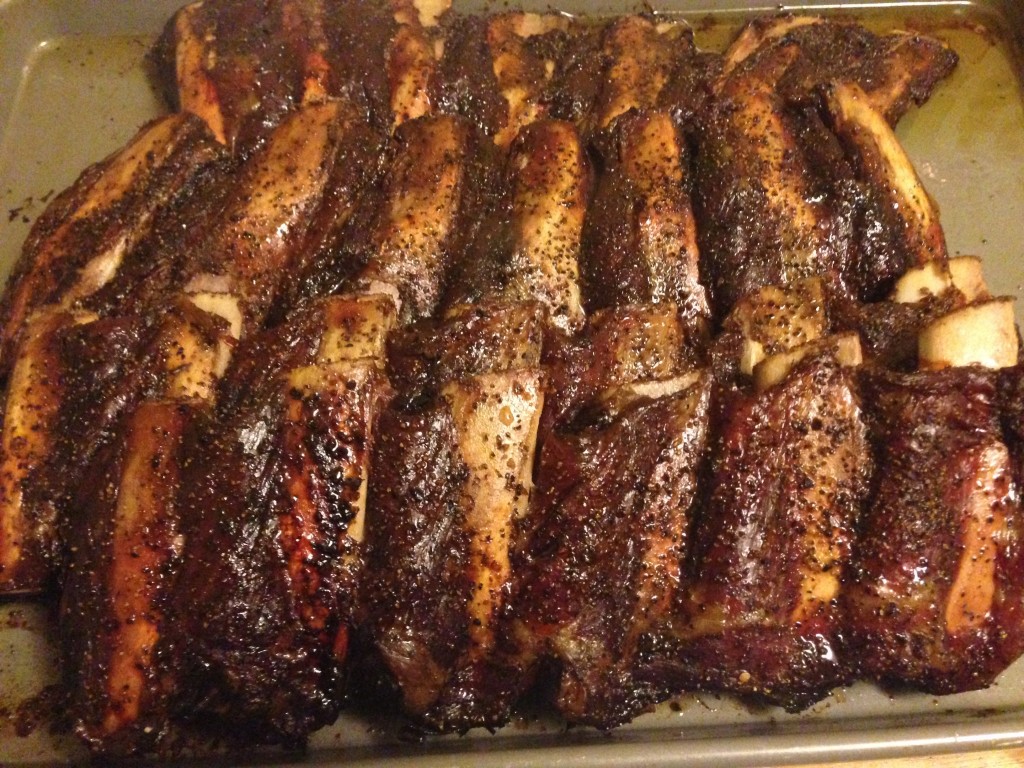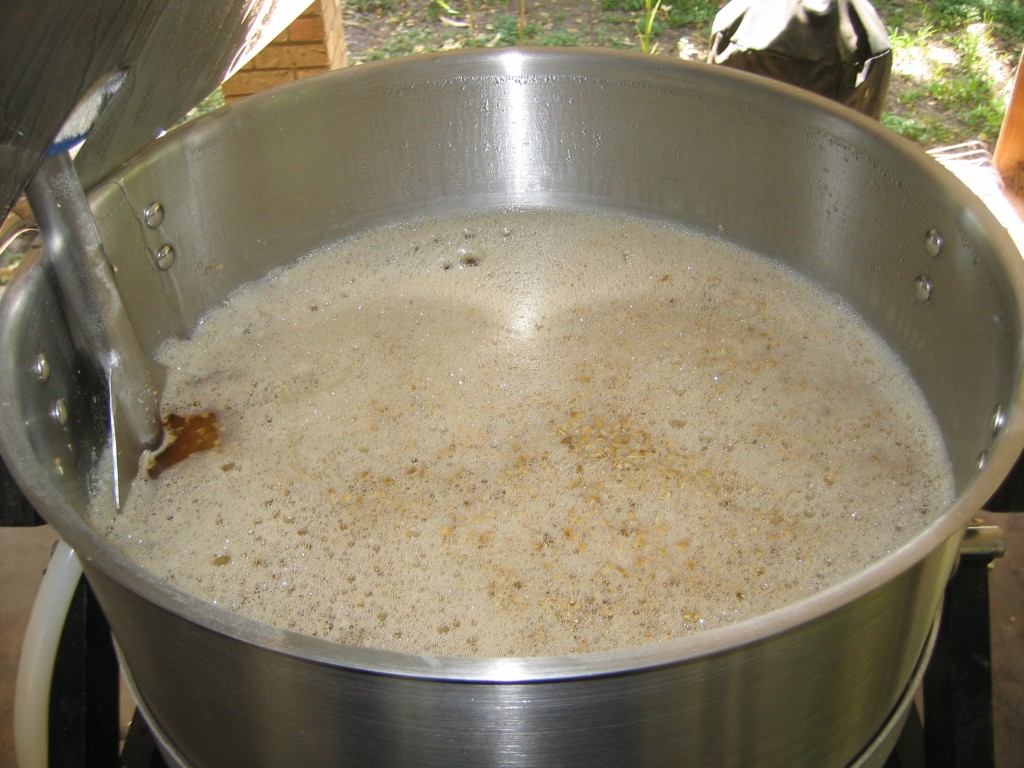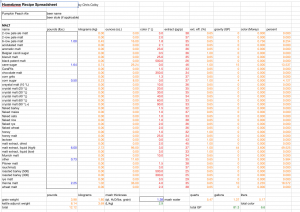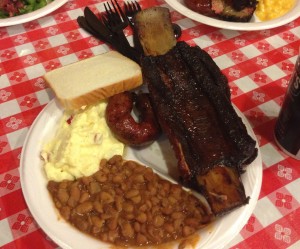 There were a lot of articles about beer and food this week, including an article on beef and beer in Belgium, pairing beer and bar snacks, pairing beer and chocolate, and finally, pairing beer and Girl Scout cookies. And in the same vein, the Cleveland Plain Dealer website gives seven things to know about attending a beer dinner.
There were a lot of articles about beer and food this week, including an article on beef and beer in Belgium, pairing beer and bar snacks, pairing beer and chocolate, and finally, pairing beer and Girl Scout cookies. And in the same vein, the Cleveland Plain Dealer website gives seven things to know about attending a beer dinner.
Archives for February 2015
Beer News (Feb 11–24)
Handy Homebrew Equation
 These days, most homebrewers rely on recipe formulation software to help them calculate the relevant numbers (expected OG, IBU, SRM, etc.) for most brewing situations. There is, however, a simple equation that frequently comes in handy that may or may not be included with your brewing software. And in either case, it’s so simple and handy that you should just memorize it. [Read more…]
These days, most homebrewers rely on recipe formulation software to help them calculate the relevant numbers (expected OG, IBU, SRM, etc.) for most brewing situations. There is, however, a simple equation that frequently comes in handy that may or may not be included with your brewing software. And in either case, it’s so simple and handy that you should just memorize it. [Read more…]
Beer News (Feb 3–Feb 10)
 Craft beer is dead. Or, so says an author at Thrillist. The reason? Because he doesn’t like gose — the slightly sour, slightly salty style of German beer that is experiencing a bit of a renaissance. Needless to say, the response to his piece from craft beer enthusiasts has been negative. See the comments section of the article for examples.
Craft beer is dead. Or, so says an author at Thrillist. The reason? Because he doesn’t like gose — the slightly sour, slightly salty style of German beer that is experiencing a bit of a renaissance. Needless to say, the response to his piece from craft beer enthusiasts has been negative. See the comments section of the article for examples.
The author’s point seems to be that since gose is now being revived, we’ve hit the bottom of the barrel when it comes to dredging up old beer styles, and therefore craft brewing is out of ideas. Among the things he neglects to consider is that new types of beer don’t have to come from resurrecting old beer styles. American-style pale ale, IPA, and double IPA did not exist prior to the craft beer revolution. And brewers around the world are more than capable of brewing new and interesting beers. The “Belgian-inspired” segment of brewing alone will likely continue to come up with many new and interesting brews. And of course, the simple idea that other people may enjoy something even if he doesn’t seems to elude him.
As beer enthusiasts, we’re used to shoddy reporting and commentary on beer and brewing related issues in the mainstream media, but this article is worse than most. It is better than the Food Babe’s crap, but that’s not saying much.
Estimating Extract Efficiency When It Varies With Original Gravity
 As I outlined in the previous article, one reason for decreasing extract efficiency when brewing higher-gravity brews is that some brewers boil the same volume of wort, regardless of the size of their grain bill. If you do so and use continuous sparging, the volume of sparge water you use decreases as your grain bill gets larger. As such, the larger the grain bill, the fewer sugars are rinsed from the grain bed after the first wort had been run off. The same can be true if you batch sparge and your pre-boil volume does not go up with bigger grain beds.
As I outlined in the previous article, one reason for decreasing extract efficiency when brewing higher-gravity brews is that some brewers boil the same volume of wort, regardless of the size of their grain bill. If you do so and use continuous sparging, the volume of sparge water you use decreases as your grain bill gets larger. As such, the larger the grain bill, the fewer sugars are rinsed from the grain bed after the first wort had been run off. The same can be true if you batch sparge and your pre-boil volume does not go up with bigger grain beds.
Equivalently, with an unchanging boil volume in a “straight” BIAB system — one in which the bag is hoisted from the mash tun/kettle and allowed to drip, but isn’t sparged — larger grain bills mean higher gravity wort. When the grains are removed, the wort retained in the grain bed is the same gravity as the free wort. The volume of wort retained by the grain bed is also larger with larger grain bills. As such, progressively larger grain bills equate to more sugar being removed from the kettle by the bagged grains. More wort is retained by the grains and that wort is of higher gravity.
As I mentioned, in order to preserve your extract efficiency, you need to ensure that you completely sparge your grain bed. However, for some brewers, this is either not possible or inconvenient. The next best thing would be a way to predict your extract efficiency for whatever original gravity you desire — and there is one way easy way to do this. The catch is that you need to have had taken good notes for your prior beers.
Declining Extract Efficiency at Higher Original Gravities
You will frequently hear homebrewers complain of losing extract efficiency when brewing higher gravity beers. The reason for this is not widely understood in homebrewing circles and not incorporated into recipe formulation software. A loss of extract efficiency at higher original gravities is not inevitable. When it occurs, it is the result of the techniques chosen by the brewer. It is of particular relevance to brew-in-a-bag (BIAB) brewers, but affects any homebrewer who collects and boils the same amount of wort regardless of the size of his or her grain bill. In this article, I’ll explain the problem and how to fix it. And tomorrow, I’ll show you one to account for it if you chose not to fix it. [Read more…]
Pumpkin Peach Tripel
So, as I related in the most recent Beer News, Bud released an ad that got some craft beer enthusiasts hot under the collar. Near the end of that ad, we’re told that hipster nancy boys can go ahead and sip their pumpkin peach ales, the real bros will be out there pounding down some golden suds (i.e. Budweiser). Of course, this immediately sent tens of thousands of homebrewers to their recipe formulation software to try to come up with a recipe for pumpkin peach ale. Here’s my stab at it. [Read more…]
Beer News (Jan 22–Feb 2)
 Early in yesterday’s Superbowl, Budweiser aired a spot that showed a puppy getting lost and finding his way home. Absolutely f%#$ing adorable. Now let’s move on.
Early in yesterday’s Superbowl, Budweiser aired a spot that showed a puppy getting lost and finding his way home. Absolutely f%#$ing adorable. Now let’s move on.
Late in the game came another Bud ad, one which has prompted a lot of comments from craft beer lovers. (See this article and this article for two of the better responses.) The ad starts with Bud proudly proclaiming themselves a macro beer. (There’s no voice over, everything in the ad is presented in text, so blind people won’t get all crazy and start buying Budweiser.) Their proclamation is an interesting tactic, and one that has worked for others in the past — embrace who you are and adopt the language of the critics as your own. So, how should we view this proud macro beer? [Read more…]





Recent Comments